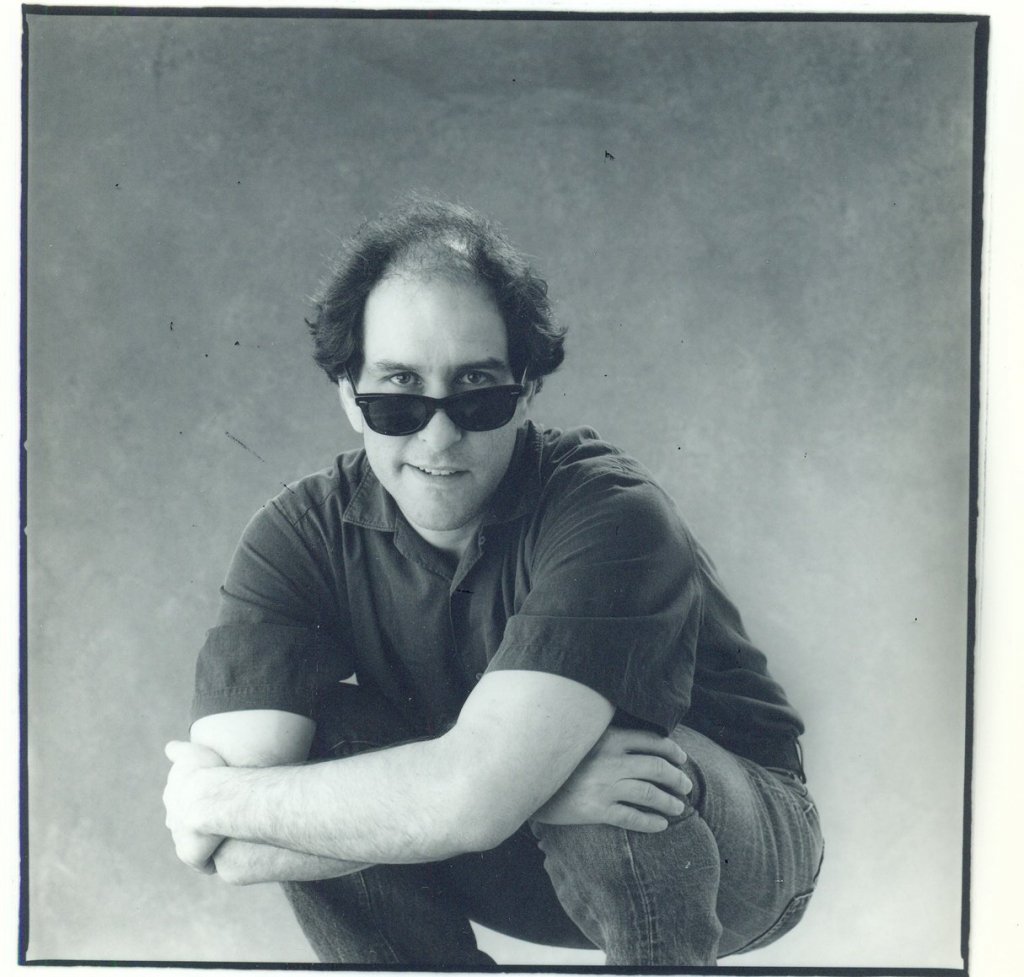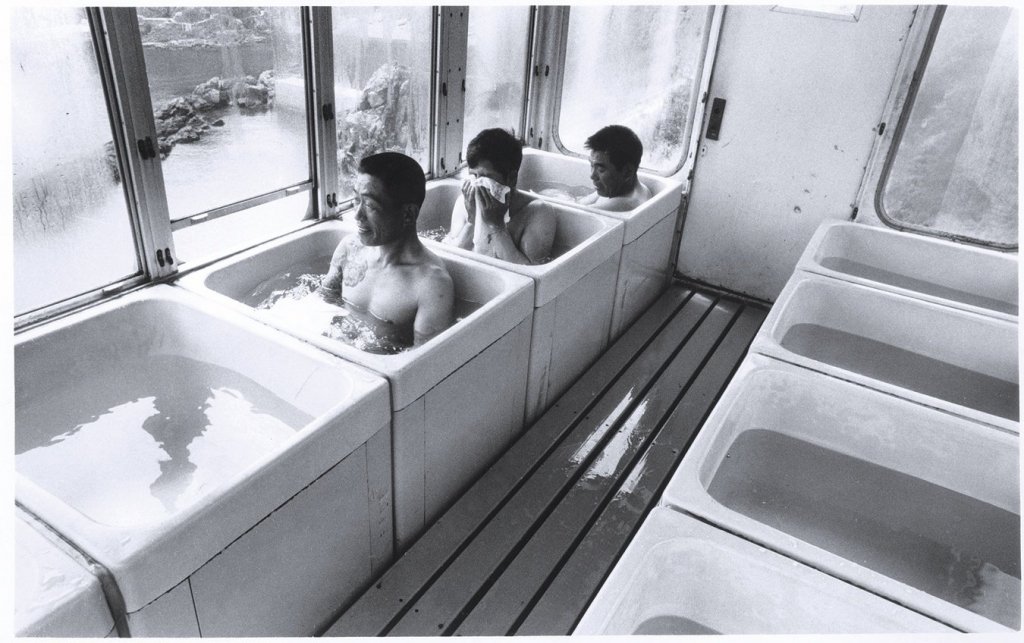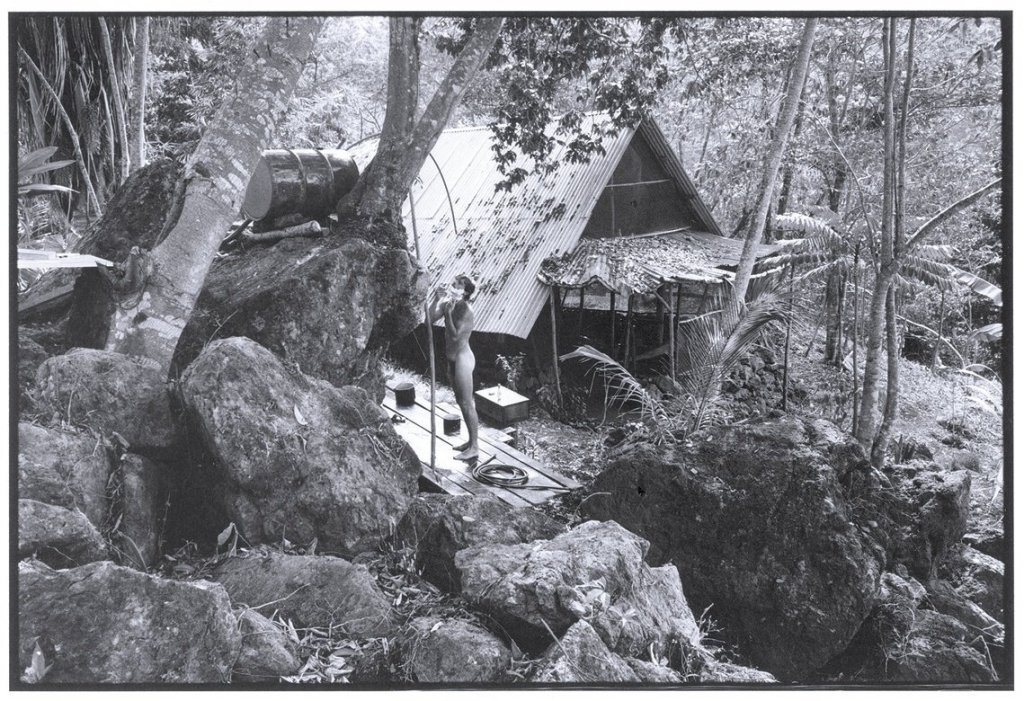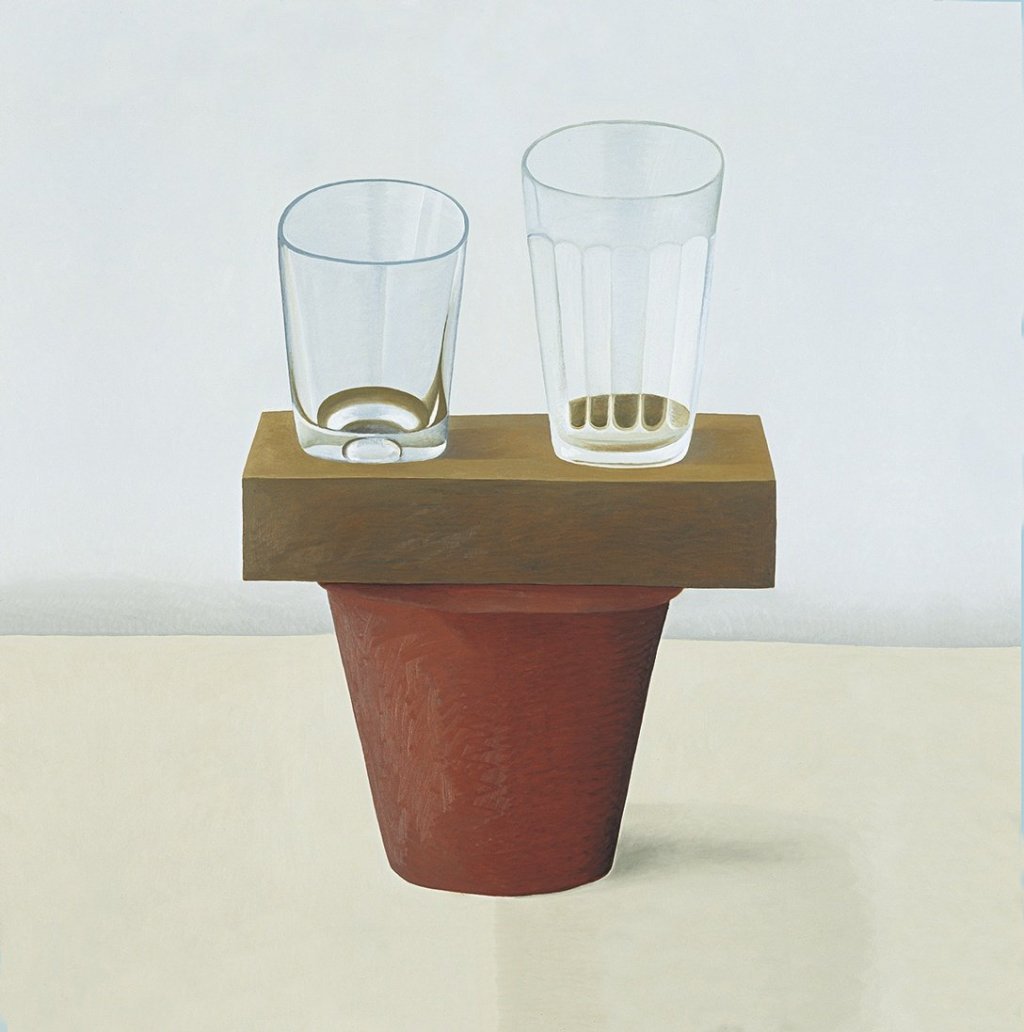Bathing for gourmets: an interview with Leonard Koren
We look into fine bathing and the pleasure of inefficiency through an interview with artist, aesthete, and polemist Leonard Koren.
If we were to give one example of an artist that pushes the limits of what an artist can be, we would name Leonard Koren. The range of his interests and practices is simply too wide to put him in a box. There’s been many career changes in Leonard Koren’s life. Born in New York over seventy years ago and a long-term California resident (with a few years break in Japan), he studied architecture and art, got into philosophy, and practiced the fine art of book-making, taking the role of the writer, designer and publisher at once.

Despite his variegated life as an artist, Koren has focused on a beautifully idiosyncratic topic for many years, that is bathing. How does an artist deal with bathing? The biography from a recent exhibition at La Loge in Brussels says that after his graduation, Koren would organize bath events, create particular bathing environments, and publish about bathing. In 1976 he founded WET Magazine dedicated to gourmet bathing: the idea that bathing should be more than the activity of cleaning ourselves, just like gourmet food should be more than the fuel for our bodies.
There is more than hedonism in gourmet bathing though. Through this topic Koren also delves into issues of contemporary design, from utilitarian objects to architecture, keeping a certain outsider look on those issues, perhaps typical of artists. His attention to the concept of inefficiency within contexts that would otherwise ban it is critical, and so is his reporting on alternative aesthetics such as Wabi-Sabi, the Japanese sense of beauty, which provides an alternative to Western mainstream ideals in both art and design. We interviewed him to hear more about all these wonders.
***
Wabi-Sabi
In your book on Wabi-Sabi you ask a few questions: “how do you achieve simplicity without inviting boredom? How do you pay attention to all the necessary details without becoming excessively fussy?” Your books feel close to this state of grace arrived at by the sober and heartfelt intelligence that you mention. It feels like artistic achievement to us. Did you have these questions in mind when producing your own works? Are your books Wabi-Sabi in some respect?

Leonard Koren: I approach each book with a different set of questions in mind. In other words, I view each book I make as a new set of problems to solve. I usually have a number of ideas that I’m preoccupied with at any given moment, and I try to figure out how these ideas relate to one another. About midway through the book-making process I begin to comprehend what it is I’m heading towards, then the work becomes clearer. The qualities I bring to all of my book projects are a desire to approach the subjects with honesty and authenticity. This usually involves drawing on personal experiences that are unique to me. The foregoing is really all that’s in my mind while working. Perhaps this means all my books are imbued with some wabi-sabi-like attitudes, but I never have this thought in mind.
Superior Bathing
Your book on superior baths doesn’t provide clear instructions on how to design (or un-design) them, but you do mention three fruitful metaphors for the bath artist out there: discovery, making nature, poetry. These are a mix of serendipity, vernacular, and story-telling. Especially the latter seems also an important aspect of art, where narratives are needed for an object to gain artistic status and perhaps even value. Is gourmet, undesigned bathing close to an artistic experience? Is a bath without a story like an artwork without content?

Leonard Koren: Wow! What an abstract question!! In the book “Undesigning the Bath” I suggested that people might try approaching the design of the bath more like artists than designers. Artists are concerned with what I would call “the poetic.” Designers more with “the practical.” Of course, both are necessary for a satisfying life in the material world. But in the context of life in middle- and affluent-class industrial societies, the practical seems to have dwarfed the poetic. So I try to redress this imbalance. . . . Back to your metaphors of bath without a story and artwork without content. I think that we humans always fill in any voids with our own stories and content. That is, we automatically create meanings even with the most minimal information at our disposal. How satisfying, how fulfilling these meanings are varies from situation to situation. Of course, in my books I am always advocating for the meanings I favor. And these tend to be in the poetic direction.
Bathing & Inefficiency
When you talk about ergonomics, you say it involves designed predictability, which might be justified for automobile interiors, computers keyboards, etc. Not the undesigned bath though. Can you elaborate on the need and property of the bath as anti-ergonomics and unpredictable? On the one hand, baths imply relaxation. On the other hand, unpredictability points to anxiety for many, the anxiety of the inefficient.
[Here is our piece about ergonomics and cars to the “abused design” of artist Daniele Milvio. Ed.]
Leonard Koren: You make a good point. In the end, the comfort of predictability is an important psychological dynamic. But I think my impulse as a provocateur is to stir things up. To keep pushing forward. Not to necessarily make things better—because what is “better” after all? But to provoke thinking about things in new ways. Ultimately the pleasures that I advocate the most for are decidedly cerebral rather than tangible.

Sensuality?
In one of the footnotes, there is a passage about anarchy turning into discomfort in the bath: “a communal bathing situation, where everybody is equally conscious of not knowing the rules, can cause a momentary breakdown of social hierarchy, which is usually quite a delightful sensation. But quickly, confusion and discomfort replace delight when notions of courtesy, modesty, privacy and propriety are individually addressed in conflicting ways.” Do you think this middle ground between anarchy and conventions is what makes bathing so exciting, if not sensual? Sexiness as controlled surprises.
[Here is our piece on Victoria Colmegna, an emerging artist that has explored the ambiguities present in baths and spa. Ed.]
Leonard Koren: I wasn’t considering sexiness or eroticism when I was writing about the rules and etiquette of communal bathing. I was thinking more about the meditative transcendence bathing can inspire. I think you’re right though. A little bit of anarchy, or “controlled surprises” as you say, can make the heart race a little faster in a good way.
Contemporary Design
In your book we find ideas against the institutionalisation, egocentrism and even misanthropy in design and architecture. However some designers and architects must be aware of these issues, and we are wondering if you could give us some examples of good design and architecture from the institutionalized world?
Leonard Koren: As a critic and polemicist I guess I do rail against ideologies and institutional behaviors I think regressive. In actual life though, I tend to be rather generous about the design and architecture I encounter in my daily existence. Handling and looking at a mass-produced tea pot by George Sowden, for example, always gives me great pleasure. And any architecture that I inhabit for more than a day or two I feel at home with. There is a book about the artist Robert Irwin titled “Seeing is Forgetting the Name of the Thing One Sees.” That phrase sums it all up, I think. Experiencing something for what it is, not all the hype surrounding it, is a kind of accommodation between you and the thing/architecture. In that accommodation, everything is fine. I would even say good.

Contemporary Publishing
Finally, because of your editorial work with WET and other projects, you can be considered an expert on art publishing. What is your take on the current state of the industry? Do you still have book or magazine projects?
Leonard Koren: Sorry, I don’t have any special knowledge about the state of the art-publishing industry. But I am finishing up work on a book now. A few years ago during an interview I was called “an aesthete.” At first I thought it was a criticism. After reflecting on the label though, I realized that the journalist was probably correct. Beauty is a consistent theme throughout my life and work. So why not just accept the fact that beauty is a center node of my existence? My next book is then aptly titled “Musings of a Curious Aesthete.” Hopefully it will be published by the end of 2020.
July 6, 2020
